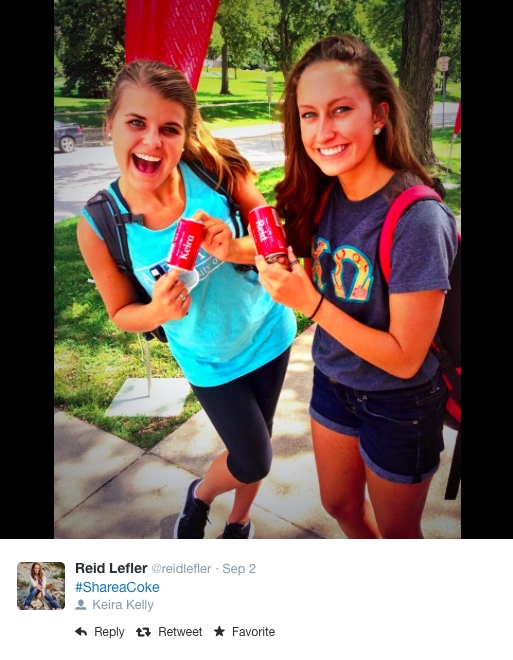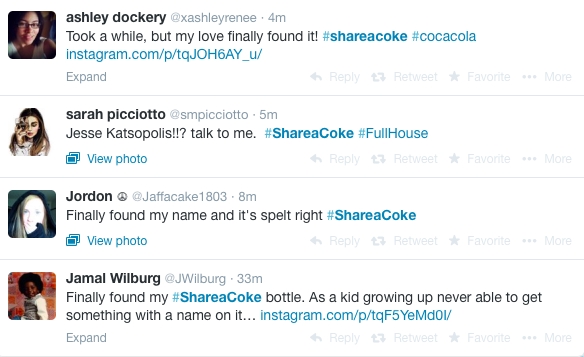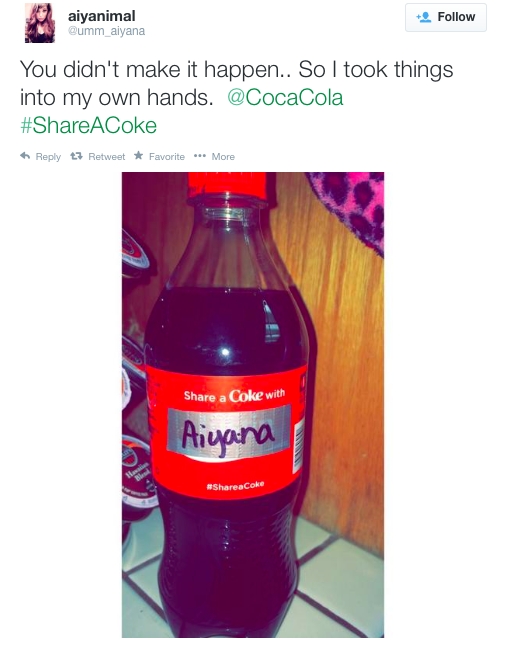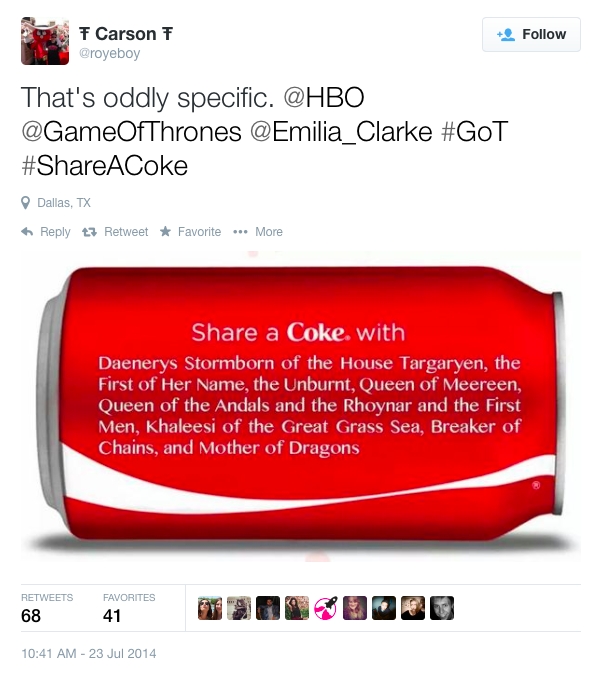Four Smart Marketing Strategies to Steal From #ShareACoke
October 2014
By Kimberly Barnes
After watching sales steadily decline for nearly 11 consecutive years in the face of consumer concerns over obesity and artificial sweeteners, Coca-Cola experienced a stark reversal of fortunes this past summer as their “Share a Coke” campaign achieved phenomenal success.
Just how successful was it? The campaign – which centered around personalized cans and bottles branded with names like Chris, Jess and Alex and friendly terms like “BFF” and “Wingman” – is credited for increasing sales for Coke products in the U.S. by 2.5 percent for the 12 weeks through the end of August compared to the same period a year ago, while sales for the same timeframe remained negative for rivals PepsiCo and Dr. Pepper Snapple Group.
But don’t let the seeming simplicity of this marketing stunt fool you. Behind “Share a Coke” are four smart strategies that clearly resonated with Coke’s customers – and that you can steal to give your own marketing efforts a jolt of new life:
1. Forget marketing to the masses. Make it personal.
We humans are a narcissistic lot. We love nothing more than seeing our names in lights. As a result, marketing campaigns that offer a personal touch will always win out over those that feel like they’re indiscriminately pandering to the masses. And by blurring the lines between brand identity and personal identity, you can gain a powerful emotional foothold in the lives of your customers.
“Share a Coke” sparked a nationwide scavenger hunt as customers sought out soda containers branded with their own names. Wisely, Coke not only used commonplace names like Mike and Sarah but also more unusual names such as Jamal and Jasmine, adding fuel to the fire for searchers.

Taking the concept one step further, Coke also sent an army of roving kiosks across the country that let people print their own personalized “Share a Coke” container. In addition, Coke added a feature on their website allowing users to create virtual Coke bottles to share with friends – which they did more than 6 million times over.
In the words of Lucie Austin, one of the brand executives that launched the original iteration of the campaign in Australia, ”At the end of the day, our name is the most personal thing we have. It's our fingerprint…our identity…in one word.” By emblazoning that one most personal thing on its bottles and cans, Coke let its customers feel a sense of ownership over one of the world’s most iconic brands.
2. Shine a spotlight on your customers.
By nature, we love anything that gives us a chance to bask in the spotlight, and the Share a Coke campaign did just that. There’s a certain thrill to finding your name on a Coke bottle – one that is multiplied by sharing that experience with friends via social media. After all, in our selfie-obsessed culture, it didn’t happen if you don’t post a picture to prove it, right?

Coke’s customers certainly seemed to think so, as more than 550,000 Instagram posts and 344,000 tweets with the hashtag #shareacoke kept the campaign front-and-center in our social media feeds this summer.
3. Build a bandwagon.
Popularity is a self-perpetuating phenomenon. We want to be part of something that is popular, and the more of us that jump on the bandwagon, the more people want to be on that bandwagon with us. Why? It all comes down to inclusion. We like to feel a sense of commonality with others, and we are inherently drawn to things that give us the feeling of being part of the in-crowd.

The “Share a Coke” campaign was built upon and fueled by the momentum of perceived popularity. The more people who snapped and shared their personalized bottle finds, the more their friends were driven to do the same in order to be part of the conversation.
4. Create avenues for self-expression.
Sure, we like being part of anything that’s popular and trending. But we like it even better when we can take that thing that’s popular and trending and claim ownership over it by putting our own spin on it.
If you look at the #shareacoke Instagram posts and tweets, you’ll see much more than a collage of people proudly displaying their namesake Coke bottles next to their smiling faces. You’ll also discover many images where particularly clever fans used the Coke bottle as a blank slate to add their own unique voice to the “Share a Coke” conversation, whether it was in protest of not finding their own name, to commemorate a major life milestone or to tie into another wildly popular pop culture phenomenon.



It’s hard to say whether Coke anticipated these types of responses when they designed their campaign, but they certainly reaped the benefits of having a cavalcade of creative customers who voluntarily participated in and perpetuated the popularity of their marketing campaign.
Kimberly Barnes is a digital marketing specialist turned freelance writer born back when Apple was called “Apple Macintosh,” floppy disks were actually floppy, and #2 pencils were the best way to rewind unraveled cassette tapes. Most days you'll find her summoning her muse while drinking a non-coffee beverage in Starbucks.